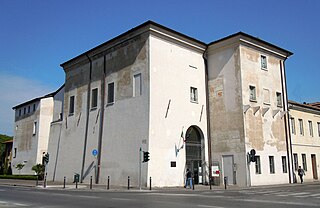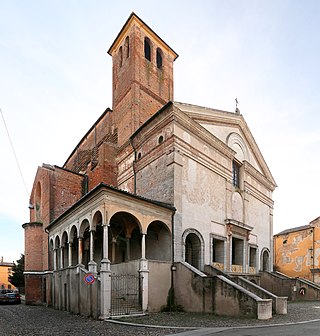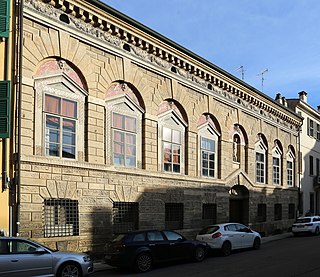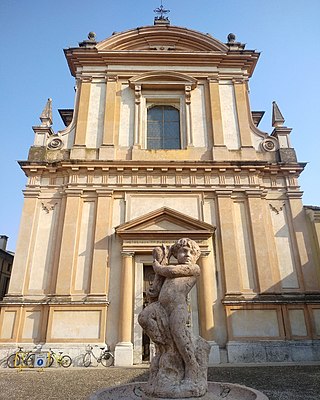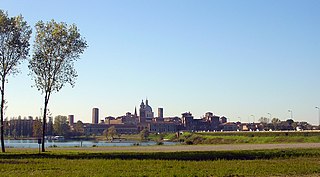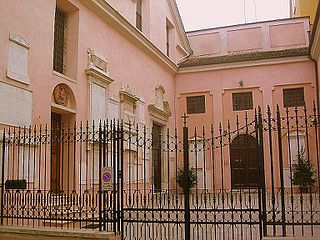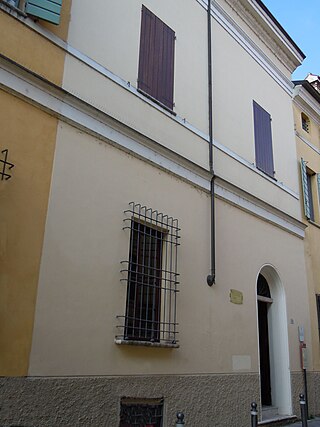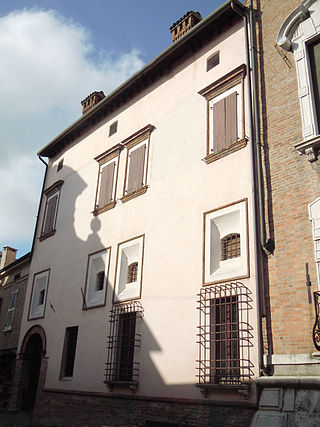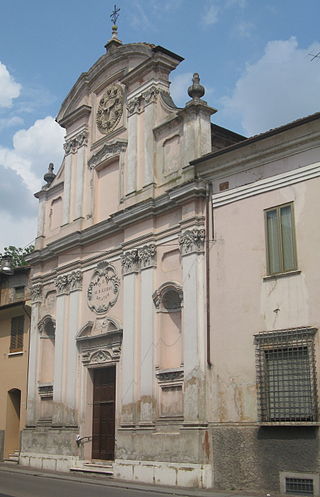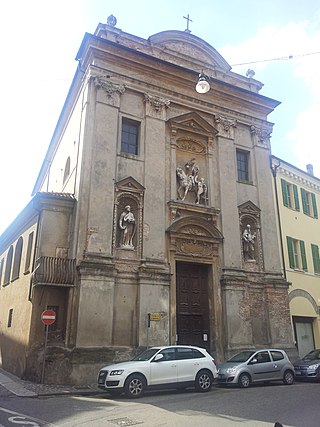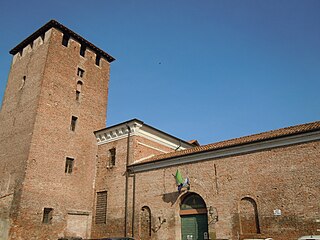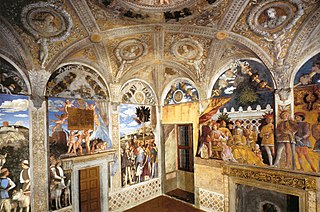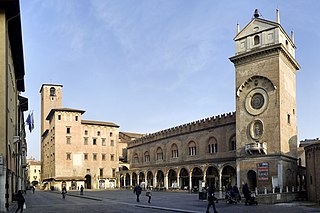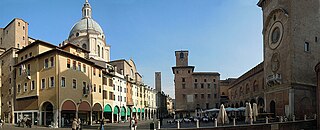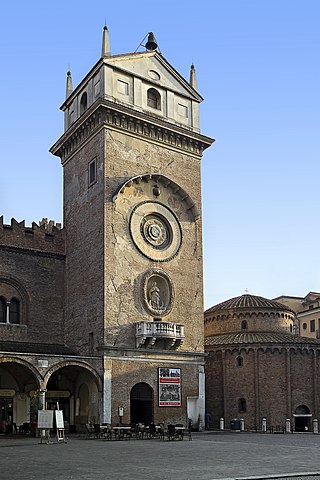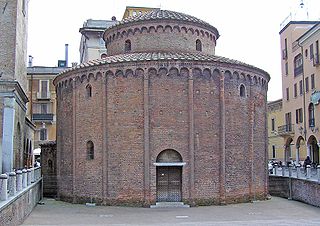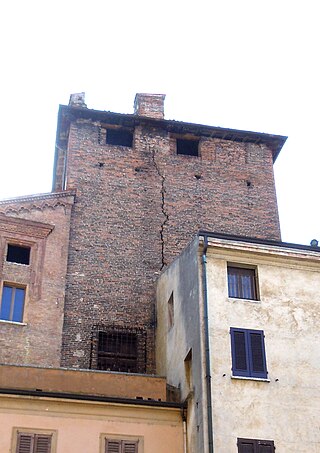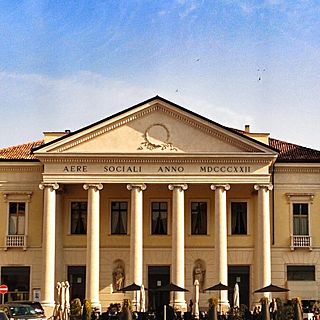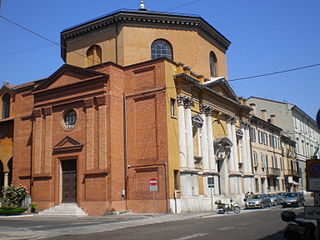Self-guided Sightseeing Tour #2 in Mantua, Italy
Legend
Tour Facts
5.3 km
57 m
Experience Mantua in Italy in a whole new way with our free self-guided sightseeing tour. This site not only offers you practical information and insider tips, but also a rich variety of activities and sights you shouldn't miss. Whether you love art and culture, want to explore historical sites or simply want to experience the vibrant atmosphere of a lively city - you'll find everything you need for your personal adventure here.
Activities in MantuaIndividual Sights in MantuaSight 1: Palazzo San Sebastiano - Museo della Città
The MACA - Mantua Ancient Collections is a museum in Mantua located in the sixteenth-century Palazzo San Sebastiano owned by the municipality. The museum was inaugurated on March 19, 2005 and from February 17, 2023 it took on its current name.
Wikipedia: Museo della città di Palazzo di San Sebastiano (IT), Website, Fixme
Sight 2: Chiesa di San Sebastiano
San Sebastiano is an Early Renaissance church in Mantua, northern Italy. Begun in 1460 according to the designs of Leon Battista Alberti, it was left partially completed in the mid-1470s, by which time construction had slowed and was no longer being directed by Alberti. As a consequence, little remains of Alberti’s work apart from the plan, which is considered one of the earliest and most significant examples of Renassiances centrally-planned churches. The plan is in the shape of a Greek cross, with three identical arms centering apses, under a central cross-vaulted space without any interior partitions. The church sits on a ground-level crypt which was intended to serve as a mausoleum for the Gonzaga family.
Sight 3: Casa di Giulio Romano
Giulio Romano's house is a Mannerist-style building in Mantua. It is located at number 18 in via Carlo Poma.
Sight 4: Chiesa di San Barnaba
San Barnaba is a Roman Catholic church located at the intersection of Via Giovanni Chiassi and Via Carlo Poma in Mantua, Lombardy, Italy.
Sight 5: Mantua
Mantua is a comune (municipality) in the Italian region of Lombardy, and capital of the province of the same name.
Sight 6: Chiesa di Santa Maria della Carità
Santa Maria della Carità is a Baroque-style, Roman Catholic church located on Via Corridoni #33 in Mantua, region of Lombardy, Italy.
Sight 7: Sinagoga Norsa Torrazzo
The Norsa Torrazzo synagogue, built in 1513 but rebuilt in 1751, is located in the building at Via Govi 13 in Mantua. It is a national monument.
Sight 8: Casa Beata Osanna Andreasi
The House of Blessed Osanna Andreasi is a historic building in Mantua, located in via Pietro Frattini 9.
Sight 9: Chiesa di Sant'Egidio
The Church of Sant'Egidio is located in the historic center of Mantua on Via Pietro Frattini. A church was located on the site likely by the 9th century, but is documented from the year 1151 in a bull by Pope Eugenius III. In 1540, the chapel of the Valenti was built, commissioned by the last will of Valente Valenti, courtier in the Gonzaga Duchy. Beginning in 1721, the church underwent a major reconstruction, and the present facade dates to that time. In 1777, the cardinal Luigi Valenti reconstructed the family chapel.
Sight 10: Chiesa di San Martino
The church of San Martino, dedicated to St Martin of Tours is a Baroque architecture, Roman Catholic church located on Via Pomponazzo in a quartiere once known as San Martino in Mantua, region of Lombardy, Italy.
Sight 11: Teatro Bibiena
Get Ticket*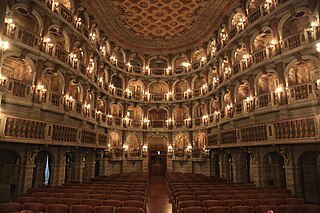
The Teatro Bibiena di Mantova was made by Antonio Galli da Bibbiena in 1767-1769 and decorated in 1773–1775 with a facade of Piermarini designed by Paolo Pozzo (1741–1803).
Sight 12: Torre di Sant'Alò
The Tower of Sant'Alò is a historic building in Mantua and is located in Piazza Arche.
Sight 13: Camera degli Sposi
The Camera degli Sposi, sometimes known as the Camera picta, is a room frescoed with illusionistic paintings by Andrea Mantegna in the Ducal Palace, Mantua, Italy. During the fifteenth century when the Camera degli Sposi was painted, Mantua was ruled by the Gonzaga, who maintained Mantua's political autonomy from its much stronger neighbors Milan and Venice by bidding their support out as a mercenary state. By commissioning Mantegna to paint the chamber, Ludovico III Gonzaga, the Marquis of Mantua, sought to give the Gonzaga rule more cultural credibility at a time when other Northern Italian courts such as the Ferrara were commissioning their own “painted chambers”.
Sight 14: Museo archeologico nazionale di Mantova
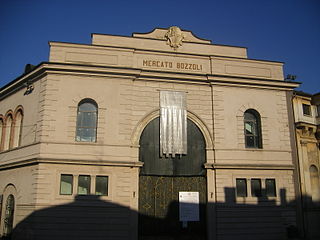
The National Archaeological Museum of Mantua is an archaeological museum located in Mantua, Italy. It is located at the Palazzo Ducale and holds objects discovered from excavations in the surrounding territory. The museum is operated by the Ministry for Cultural Heritage and Activities of Italy.
Wikipedia: National Archaeological Museum of Mantua (EN), Website
Sight 15: Basilica Palatina Santa Barbara
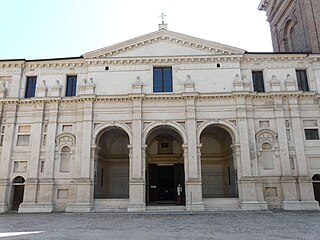
The Basilica Palatina di Santa Barbara is the Palatine Chapel of the House of Gonzaga in Mantua, Italy.
Sight 16: Palazzo della Ragione
Get Ticket*The Palazzo della Ragione is a historic building in Mantua, Italy, located in Piazza delle Erbe.
Sight 17: Piazza delle Erbe
Get Ticket*Piazza delle Erbe is one of the main squares of Mantua.
Sight 18: Torre dell'Orologio
The Torre dell'Orologio is a 15th-century renaissance tower on the Piazza delle Erbe in Mantua, Italy. It is attached to the Palazzo della Ragione, and next to the Rotonda di San Lorenzo. It houses an astronomical clock.
Sight 19: Rotonda di San Lorenzo
Get Ticket*The Rotonda di San Lorenzo is a religious building in Mantua, Lombardy.
Sight 20: Torre del Salaro
The Salaro tower is a medieval building, which stands on Piazza Mantegna in Mantua in the immediate vicinity of Piazza delle Erbe.
Sight 21: Teatro Sociale
The Teatro Sociale di Mantova is the largest historical theater located in the Municipality of Mantua; A traditional theatre, it is located in the historic centre of the city and is owned by the Società dei Palchettisti. It was built, between 1817 and 1822, by the well-known Ticino architect Luigi Canonica.
Sight 22: Chiesa di Sant'Orsola
The Church of Sant'Orsola in Mantua, Italy, was designed and built in 1608 by Antonio Maria Viani, the architect of the ducal court of the House of Gonzaga. The church was commissioned by Margherita Gonzaga d'Este, the widow of Alfonso II d'Este. Margherita, while not a nun herself, as a widow came to live in an apartment in the Clarissan monastery that was once adjacent.
Share
How likely are you to recommend us?
Disclaimer Please be aware of your surroundings and do not enter private property. We are not liable for any damages that occur during the tours.
GPX-Download For navigation apps and GPS devices you can download the tour as a GPX file.
